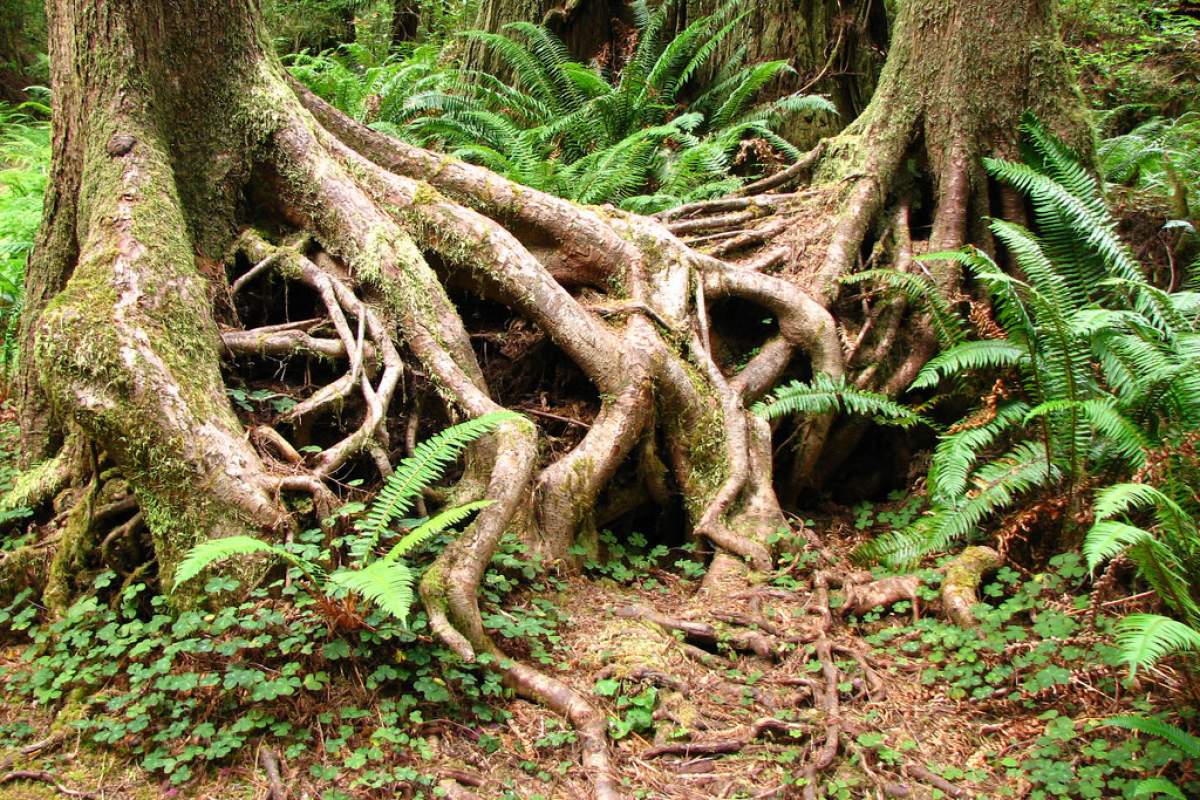
Consider this conundrum: why would a root system, completely submerged underground for the span of its life, retain photoreceptors in its branches for sensing light in the dark soil?
You might correctly guess sunlight penetrates porous soil, and roots remaining near the surface detect it and then use it to enhance growth.
But what about roots that live deep in the ground away from surface light? Why would these roots retain their light detectors in a perpetually dark environment?
Light Travels
It turns out that these photoreceptors, which are called phytochromes and are widespread in plants, receive light that is directly transmitted down the plant stem. When leaves capture direct sunlight, they don't simply trigger a chemical signal to communicate this to the root system.
The plant can directly transport light in less time. After leaves collect sunlight, red light from the right end of the spectrum pipes down the plant's stem.
This red light has a longer wavelength than other light in the spectrum, and so it can travel farther. Roots directly sense this light and use it to monitor the above-ground environment.
Seed Germination
This is vital information to know as we seek to find ways to grow plants year-round. Photoreceptors optimize root growth while also controlling the plants' most vital activities.
They activate the germination of seeds and regulate the timing of adult-stage flowering. The light they receive from above even records the size, number, and movement of all the plant's leaves.
Although they live in the dark, these photoreceptors respond as sensitively to light as leaves do, and they help to sustain almost all the plants we see.
Sources And Further Reading:
- H.-J. Lee, J.-H. Ha, S.-G. Kim, H.-K. Choi, Z. H. Kim, Y.-J. Han, J.-I. Kim, Y. Oh, V. Fragoso, K. Shin, T. Hyeon, H.-G. Choi, K.-H. Oh, I. T. Baldwin, C.-M. Park. Stem-piped light activates phytochrome B to trigger light responses in Arabidopsis thaliana roots. Science Signaling, 2016; 9 (452): ra106 DOI: 10.1126/scisignal.aaf6530
- Max Planck Institute for Chemical Ecology. "Plant roots in the dark see light." ScienceDaily. November 3, 2016. Accessed November 16, 2017.
- Klein, Alice. "Plants ‘see' underground by channelling light to their roots." New Scientist. November 1, 2016. Accessed November 16, 2017.
- "Phytochrome." Science Direct Topics. Accessed January 2, 2018. (Might only be accessible for free if you have access via an institution)









